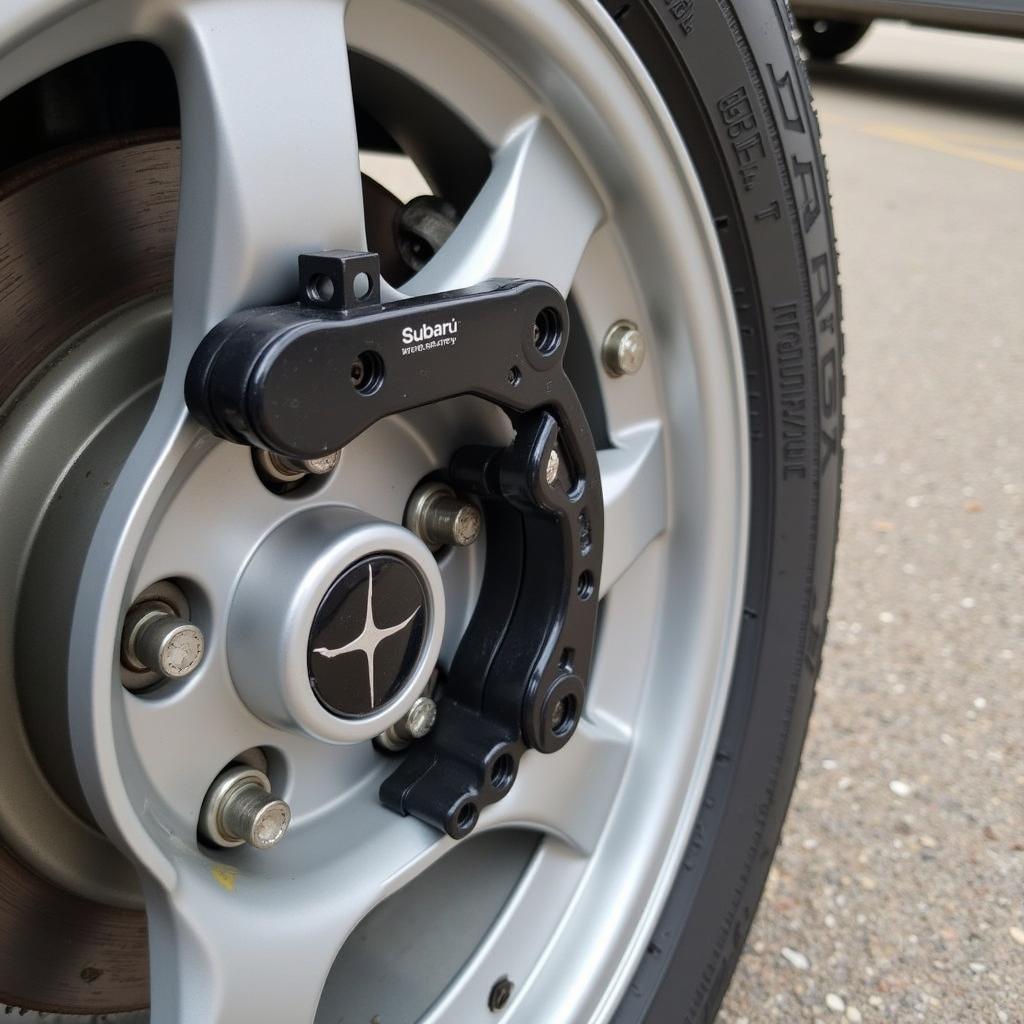That pesky brake warning light on your Subaru dashboard can be a real headache. It’s a vital safety indicator, so ignoring it is never an option. This comprehensive guide will walk you through the common causes of a brake warning light in a Subaru, how to diagnose the problem, and even some potential solutions you might be able to tackle yourself.
One of the most common reasons for the brake warning light is low brake fluid. This could be due to normal wear and tear of your brake pads, a leak in the brake system, or even just needing a top-up. Check your brake fluid reservoir – it’s usually a clear plastic container near the firewall – and see if the fluid level is below the “MIN” line. If so, adding the correct type of brake fluid might solve the issue. However, if you find yourself frequently topping off the fluid, you likely have a leak that needs professional attention. You can find more information regarding specific Subaru Outback models at brake warning light subaru outback.
What Does the Brake Warning Light Mean?
The brake warning light can mean a few things. It could signal low brake fluid, a problem with your parking brake, or a more serious issue within the braking system itself, such as a faulty ABS sensor. Ignoring this light could lead to serious safety risks.
Checking Your Parking Brake
Sometimes, a simple oversight can trigger the brake light. Ensure your parking brake is fully disengaged. Even slightly engaged, it can trigger the warning. If the light stays on after releasing the parking brake, further investigation is needed. Have you recently had a brake job? Check out this resource on parking brake issues after brake work: parking brake warning light subaru after brake job.
Diagnosing a Brake Warning Light: A Step-by-Step Guide
- Check the parking brake: Make sure it’s fully released.
- Inspect the brake fluid level: Top it off if necessary, but if it’s consistently low, you might have a leak.
- Check your brake pads: Worn brake pads can trigger the warning light. If they’re thin, it’s time for a replacement.
- Listen for unusual noises: Screeching or grinding sounds while braking could indicate worn pads or other brake problems.
- Feel for unusual brake pedal behavior: A spongy or unresponsive brake pedal is a serious safety concern.
ABS Issues and Warning Lights
A flashing brake warning light could point to a problem with your Anti-lock Braking System (ABS). This is a more complex issue that usually requires professional diagnostics. You can read more about issues regarding a 2012 Subaru Outback flashing brake light here: 2012 subaru outback brake warning light flashing.
 Subaru ABS Sensor
Subaru ABS Sensor
“A properly functioning brake system is paramount for safety,” says automotive expert, Michael Carter, ASE Certified Master Technician. “Don’t delay addressing a brake warning light. Even seemingly minor issues can escalate quickly.”
When to Seek Professional Help
While some brake warning light issues can be solved with simple checks and DIY fixes, many require a professional touch. If you’re experiencing any unusual brake behavior, unusual noises, or a flashing brake light, it’s crucial to seek professional help immediately.
“Regular brake inspections are essential for maintaining a safe vehicle,” adds Susan Miller, lead technician at Miller Automotive. “Catching potential problems early can save you money and, more importantly, prevent accidents.” Specifically, for 2011 Subaru Forester owners experiencing brake warning light problems, this resource might be helpful: 2011 subaru forester brake warning light. Owners of a 2006 Subaru Outback might find relevant information in this article: 2006 subaru outback brake warning light.
In conclusion, that brake warning light subaru on your dashboard demands attention. Understanding its potential causes empowers you to take appropriate action, ensuring your safety and the longevity of your vehicle. Don’t ignore it – address the issue promptly for peace of mind on the road.

